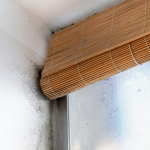After asbestos sheeting was found dumped in a regional Victorian park recently, patrols are being stepped up across the border in forests around Mount Gambier in an effort to reduce illegal dumping.
Forestry company, OneFortyOne, has said that their Mount Gambier team are finding new dumping sites almost daily. Area supervisor Jeremy Cookson said, “It is the worst that I’ve seen probably in the 13 years that I’ve been working in the forest in this area.”
The company has resorted to installing security cameras, but it hasn’t stopped local residents from dumping bulky items, car parts, general rubbish, and, concerningly, asbestos-containing materials.
“With asbestos, we have to get that collected, and it costs a fair bit to do that,” Mr Cookson explained. “I find it pretty disappointing.”
He said he spends at least one full workday each week managing the administration of the clean-up and inspections, and in addition to the cameras, they have introduced “some weekend patrolling … which is also starting night patrols.”
He believes that increasing costs of living could be having an impact on the rates of dumping, which, going by word of mouth accounts in several regional areas, is on the rise.
“I think it could be a lot of people are finding it financially difficult these days; the price of everything’s gone up,” he said.
The 2021 Asbestos Snapshot, commissioned by the state government, found that “residential properties accounted for about 65 per cent of South Australian removals, with Adelaide, Modbury, Woodville, Whyalla and Salisbury being the localities with the highest number of removal notifications.”
Most South Australian councils have Environmental Protection Authority-approved waste facilities where asbestos can be safely and legally disposed of for a fee.
Late last year, Martyn Campbell, Executive Director of SafeWork SA and Chair of the South Australian Asbestos Action Plan (SA AAP) noted that the state is committed to its responsibility to “protect the long-term future health of South Australian residents.”
“Australia still has one of the highest death rates of asbestos-related diseases per capita in the world,” he said, noting it is approximately four times higher than the national road toll.
“Regulators, government departments, industry, workers, organisations and the community at large will all need to work together to make the state safe from asbestos.”



